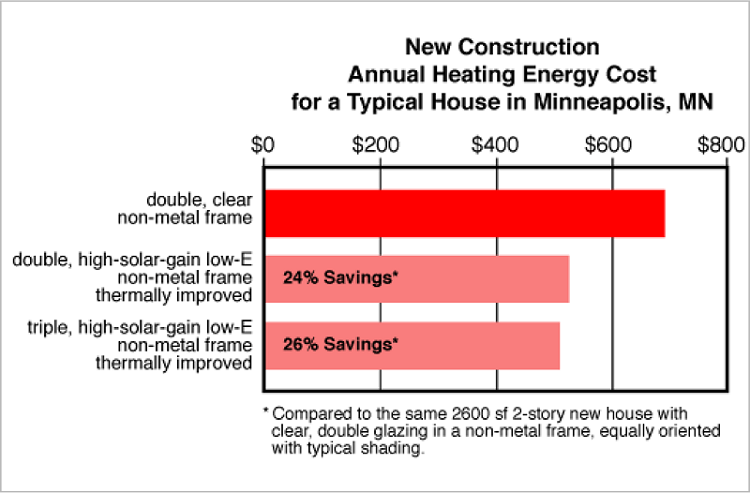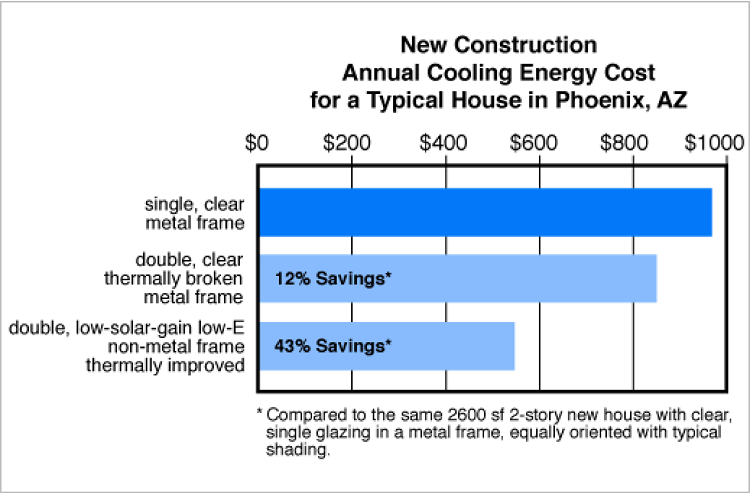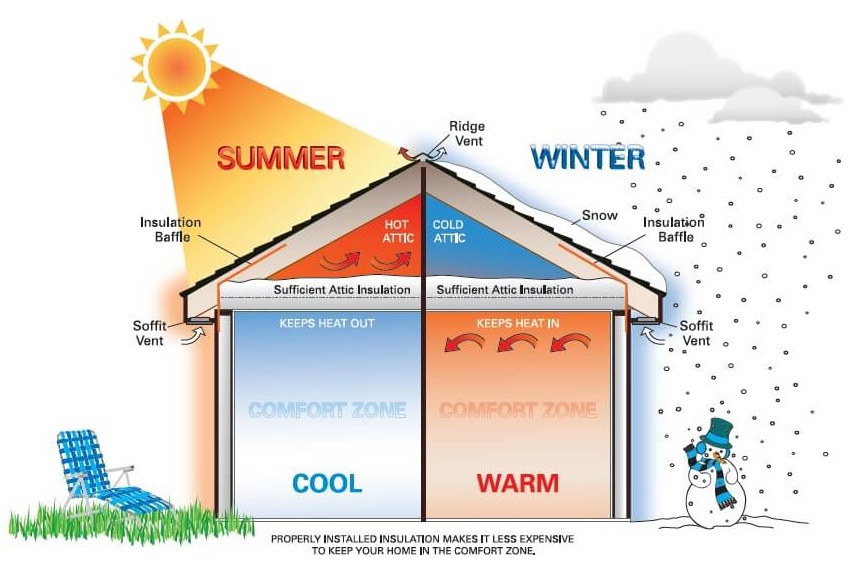Digging into the numbers: How much you can save with an ENERGY STAR home
The benefits of owning an ENERGY STAR certified home not only include the environment, but a significant savings on your monthly energy bills. Exactly how much money will vary based on numerous factors, but below you’ll be able to get an idea of specifically where the biggest savings will come from and just how much they may help your bottom line.
What are ENERGY STAR homes and how do they save money?
While you may have seen the ENERGY STAR sticker while shopping for a new dryer or refrigerator, an ENERGY STAR home is not just a house filled with ENERGY STAR appliances. In fact, builders don’t have to install ENERGY STAR appliances to receive ENERGY STAR certification for a new home.
Instead, ENERGY STAR homes and apartments get their iconic blue label by incorporating
energy-efficient design into their builds, including:
- high-efficiency heating, cooling, and ventilation systems
- a high-performance thermal enclosure
- efficient lighting and appliances
- a complete water management system
- independent inspections and testing
These enhancements beyond the typical home translate directly into cost savings through their efficiency – less energy drawn, less water wasted and less heat/cool air lost make for lower utility bills. Reduced maintenance costs also contribute to overall savings.
How much can you save with an ENERGY STAR home?
ENERGY STAR homes are
at least 10% more energy-efficient than their counterparts that are built to code only. And on average, an
ENERGY STAR home saves owners more than 20% per year on their utility bills. Let’s take a look at how each aspect of the build contributes to the overall savings.
Savings through the thermal enclosure system
High-performance windows play a big role in keeping ENERGY STAR homes comfortable more efficiently – they block much of the solar heat gain in the summer and reflect radiant heat indoors during the winter. Comprehensive air sealing of the home’s envelope and additional insulation are also important features of your thermal enclosure system.
High-solar-gain, low-E windows can save up to 26% (roughly $200) per year in cold climates and up to 43% (roughly $400) per year in hot climates.


Source:
Efficient Windows Collaborative
A well-sealed home with appropriate insulation
saves 11% of a home’s total energy costs on average, or roughly $160 per year.

Savings through the complete heating and cooling system
ENERGY STAR homes’ HVAC (heating ventilating and cooling) systems boost efficiency through better-engineered equipment, expert system design, sizing, installation and sealing, and whole-house mechanical ventilation with premium air filters.
Try the ENERGY STAR heating and cooling savings calculator
Nearly half of the average home’s electricity bill goes to covering the use of air conditioners and furnaces. ENERGY STAR-certified HVAC systems can help you save energy and keep those costs down. With your zip code and a few details about your current HVAC system, you can get an estimate of how much you could save with an energy-efficient system from ENERGY STAR.
Savings through the water management system
An ENERGY STAR home’s water management system secures savings in the form of avoided costs of fixing water damage to the home. These systems consider the home site and foundation, walls, roofs and building materials to ensure water is safely directed away from the home to prevent mold, rotting and other potentially costly water damage.
- Mold remediation costs $13.33 to $28.33 per square foot, or
up to $2,000 for a crawl space, $3,000 in the basement, and $4,000+ in the attic.
- Hardwood floor water damage can cost
up to $50 per square foot to repair.
- Drywall repair after water damage costs roughly
$550 on average.
Savings through efficient lighting and appliances
ENERGY STAR-certified and other energy-efficient lighting options are utilized in ENERGY STAR-certified homes to save significant energy, and cut the cost both to run them and to replace them. They come in many different styles and designs to match whatever your preference is for decor and level of illumination.
Likewise, opportunities to incorporate energy efficiency into your appliance choices in a new home run the gamut from dishwashers to refrigerators, washing machines, ceiling fans and more. These items account for over 10% of your energy bill and when energy-efficient can offer cost savings, improved performance and higher quality.
- A 60-watt replacement ENERGY STAR-certified LED light bulb that uses about 9 watts
saves nearly $55 in electricity costs over its lifetime.
- ENERGY STAR-certified clothes washers use over 45 percent less water and 25 percent less energy than standard models, saving about
$50 per year in energy costs on average.
- An energy-efficient dishwasher can save
up to $129 over its lifetime.
- At $.1546/kWh (the national average electric rate at the time of writing), a high-efficiency refrigerator that draws 106 kWh per year currently saves $68.33 in energy costs annually compared with a model that draws 548 kWh.
Try flipping your fridge
For your new home, consider putting in a new ENERGY STAR refrigerator. With ENERGY STAR’s convenient tool, you can get an idea of how much you can save by upgrading to a new, energy-saving model or by switching from two fridges to one.
Finding a builder who builds ENERGY STAR certified homes
Depending on where you live, you can use the following resources to find an ENERGY STAR certified home builder in your area:
- Houstonians,
go here to find a list of builders offering energy-efficient homes in your area.
- Minnesota homeowners can search a map and database with contact info for energy-efficient builders in the state
here.
- Homeowners in other locations can find builders in their area via the Department of Energy’s builder/developer and energy rating company finder
here.